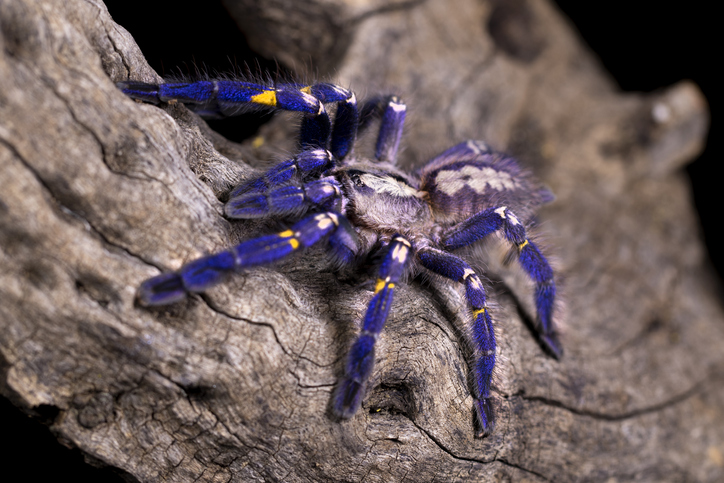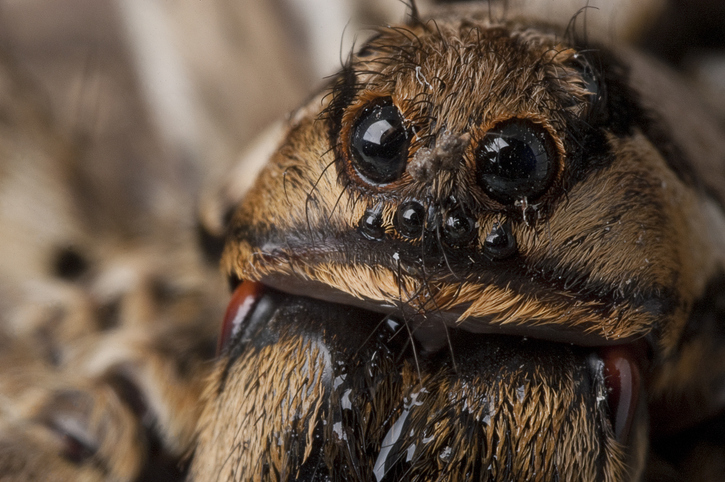It’s safe to say that tarantulas aren’t the most friendly-looking of creatures, despite their furry appearance. They are often depicted in films and television as something to run scared from, with fangs and fast-moving legs, but in reality they are fascinating and misunderstood members of the Theraphosidae family. So, whether you’re a little scared of these 8-legged arachnids or feeling brave, there’s a lot to learn!
So, without further ado, let’s uncover some of the most interesting facts about tarantulas, including whether they really are dangerous…
There are nearly 1,000 species of tarantula
There are hundreds of species of tarantula – around 900 to be more precise. They live across every continent on the planet except Antarctica, as they prefer tropical and subtropical regions.
Tarantulas can be classified as New World or Old World. New World tarantulas are found in the western hemisphere, which includes North and South America, while Old World tarantulas are typically found across Europe, Africa and Asia. It’s said that Old World tarantulas are much quicker and a lot more irritable!
One of the biggest differences between the two is New World tarantulas have what are known as urticating hairs, which can be used as a defence against predators – but more on this later.

Tarantulas are the largest spiders living on Earth
Tarantulas grow by shedding their old exoskeleton and growing a new one. This moulting process can take a few hours, and will happen several times until they reach full size. In fact, male tarantulas can take 3 to 7 years to grow to their full capacity, while females often taken 4 to 10 years.
The biggest tarantula is the goliath birdeater, found in South America, which can grow to have a leg span of up to 28cm! Despite its powerful name, this species only really eats earthworms and insects.
The average size of a tarantula is 12cm and can weigh up to 85g.
Tarantulas don’t spin webs like other spiders
Tarantulas do produce silk, but they don’t use a web to trap prey like other spiders. As tarantulas typically live in the ground, they use their silk to line their burrows. In some cases, they might spin a line of silk as a trap, creating an alert when something comes near its burrow. Tarantulas may also use webs as part of the mating process.
To catch their dinner, tarantulas trap prey with their legs and inject paralysing venom, before using their fangs. Don’t worry though – this venom isn’t harmful to us humans, and will feel more like a bee sting. After a tarantula has eaten a big meal, it usually doesn’t need to eat for another month!
A tarantula’s diet consists mostly of insects, although they are known to eat the likes of frogs, toads and mice too.
Tarantulas can flick bristles at its predators
So, about those urticating hairs we mentioned earlier. Tarantulas look furry from a distance, but up close you’ll see that these hairs are actually more like bristles known as setae. Some species of tarantulas are able to use these bristles as a defence, flicking them at those that come too close! Around 90% of New World tarantulas have these urticating setae, and can use them to penetrate skin or eyes of would-be attackers.
These bristles form over time, growing a little more every time the tarantula moults and sheds its exoskeleton.

Tarantulas have 8 eyes, but can’t see very well
Just like their legs, tarantulas have 8 eyes but they still rely heavily on other senses and are very sensitive to sounds and vibrations. These eyes have different jobs, with the two largest eyes designed to detect size. Tarantulas have 4 smaller eyes underneath these two, which are used to help determine distance.
A tarantula also has an eye on each side of its head, as it cannot turn round so easily to see. This helps tarantulas have a wider field of vision.
Female tarantulas live longer than males
The lifetime of a tarantula can vary depending on its gender and species, but generally female tarantulas live a lot longer than their male counterpart. Female tarantulas have been known to live up to 30 years!
Male tarantulas do not usually live much longer after they mate, which on average happens when they are around 3-6 years. In some species, the female tarantula might eat her mate after the mating ritual!
So, there you have it! Have you learnt some new facts about tarantulas? Why not check them out in person and put your knowledge into practice at Blue Planet Aquarium, where our new Venom exhibit lets you get up close with these creepy-crawlies!
